
Myoporum parvifolium Purpurea Purple Leaf Creeping Boobialla Oz
Myoporum parvifolium purpurea - Boobialla. An easy care low ground cover which creates a dense mat of fine-leaved foliage with purple toned new growth. It gets small white flowers in spring through summer. Great to deter weed growth and to cover slopes and banks, and can be a lawn substitute for low traffic places. Grows to around 3metres.

Myoporum parvifolium Fine Leaf Wombat Gully Plant Farm Geelong
If you're looking for a taller option, Myoporum laetum may be a good choice. This shrub or small tree can grow up to 30 feet tall and 20 feet wide, with clusters of small white summer flowers followed by small reddish-purple fruit. For a low-growing option that spreads quickly, M. parvifolium (M. p. 'Prostratum') is a popular choice.
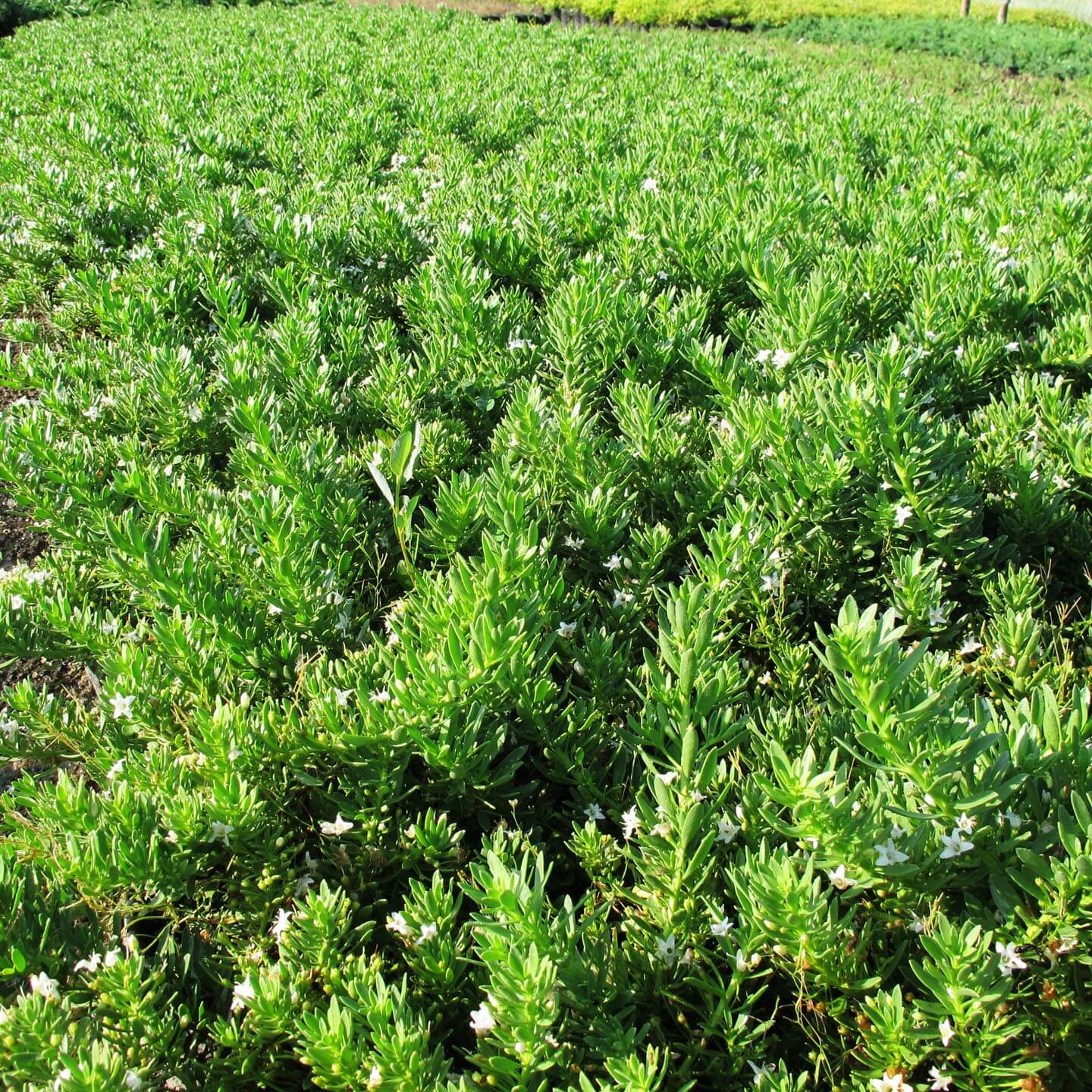
Myoporum parvifolium 'Putah Creek' Boething Treeland Farms
Myoporum parvifolium provides excellent ground cover, which spreads quickly but is easy to control. With an overall height of 5-10 cm, and a limitless spread, it's ideal for planting into paths, or as edging to lawns, helping to hide messy borders, and reducing your workload with the whipper snipper.

Myoporum parvifolium Fine Leaf Wholesale Nursery Nurseries in
The Myoporum Parvifolium, also known as the Creeping Boobialla, is a dense foliage, perennial ground cover plant. When young, the plant typically stands at a height of 0.15 ~ 0.3 metres, eventually spreading and developing a width of 1 to 2 metres as it matures.
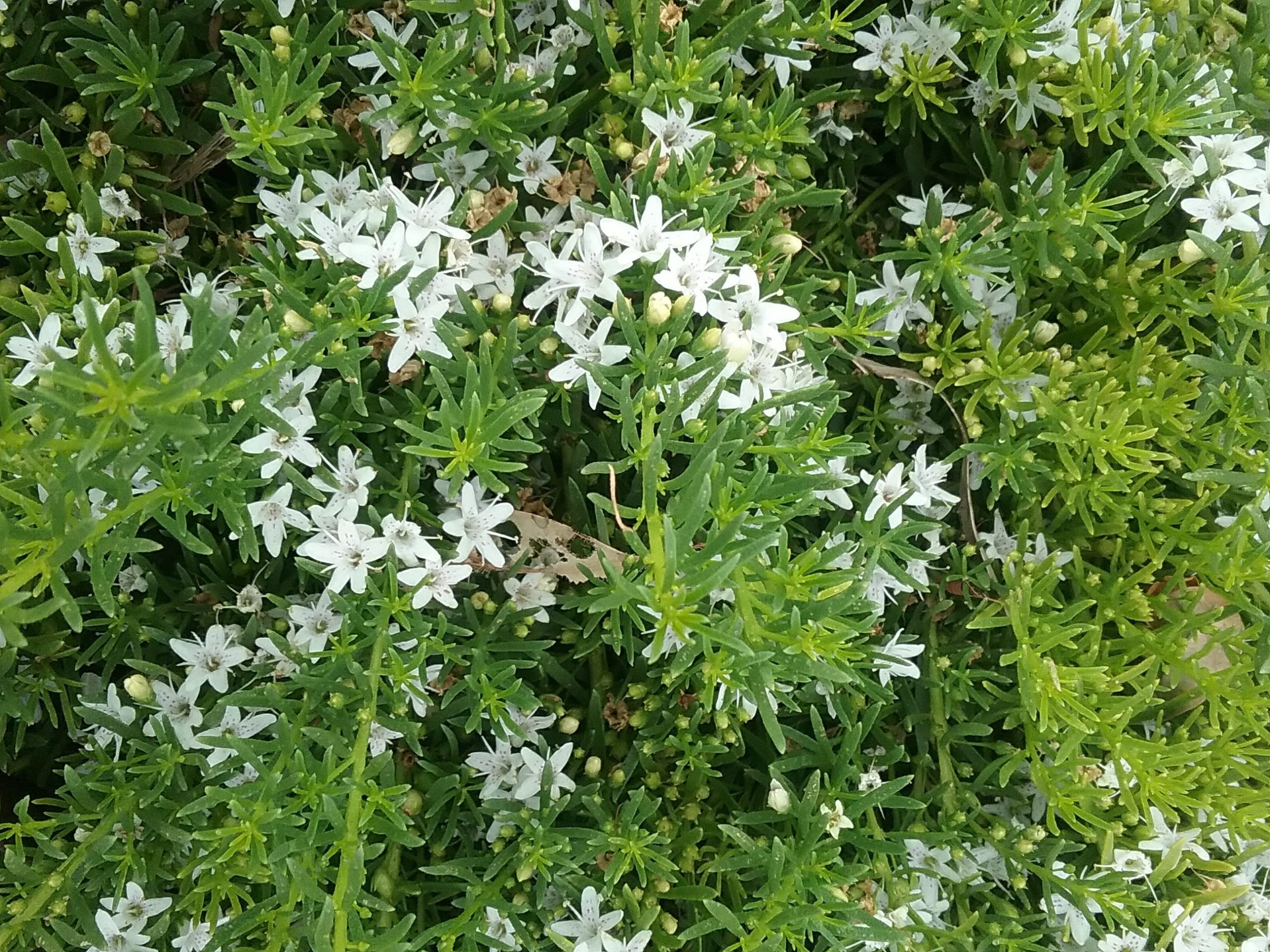
Myoporum parvifolium (fine leaf form) in 75mm Supergro Tube Trigg Plants
Creeping Boobialla, Creeping Myoporum (Myoporum parvifolium) Care Guide. Perennials can be planted anytime from spring through fall. Prepare the garden by breaking up the existing soil (use a hoe, spade, or power tiller) to a depth of 12-16" (30-40cm). Add organic matter such as manure, peat moss or garden compost until the soil is loose and.

Myoporum parvifolium Flat Leaf Wholesale Nursery Nurseries in
Myoporum (M. parvifolium) is a frost-hardy plant that bears white, star-like flowers in spring and summer. It is a great low-lying ground cover that is perfect to use on sloping banks, between trees and shrubs and between paths. Full sun to half shade. Water well after planting. Requires little water once established

Myoporum parvifolium Broad Leaf Wholesale Nursery Nurseries in
Myoporum parvifolium R.Br. APNI* . Description: Prostrate glabrous shrub forming mats to over 3 m diam., branches smooth or obscurely tuberculate. Leaves linear to oblanceolate, 1-5.7 cm long, 1.5-8 mm wide, apex obtuse or acute, margins entire or obscurely toothed, surfaces concolorous, green to brown, glabrous.
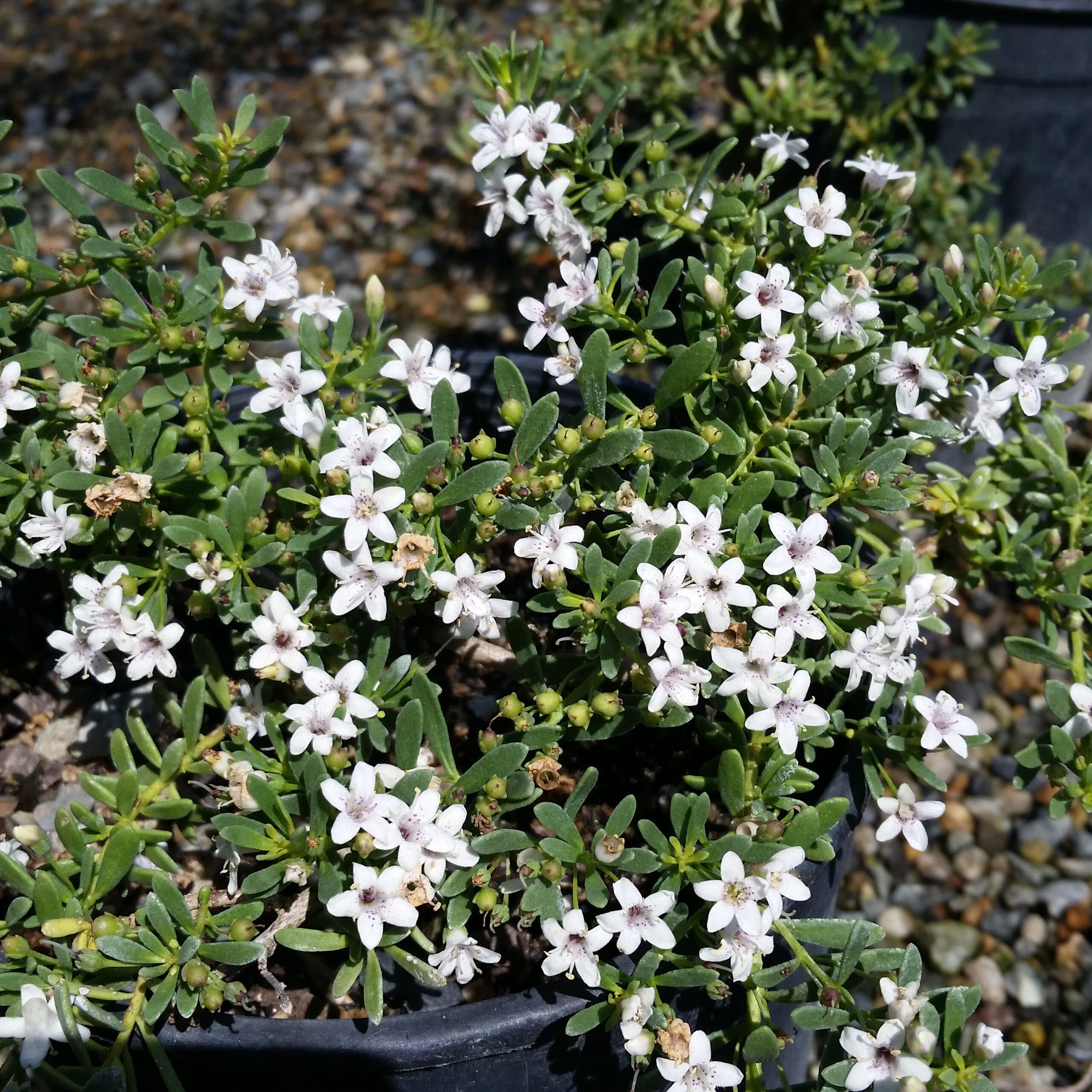
Myoporum parvifolium 'White' Australian Racer Mid Valley Trees
Myoporum parvifolium, commonly known as creeping boobialla, creeping myoporum, dwarf native myrtle or small leaved myoporum is a plant in the figwort family, Scrophulariaceae. It is a low, spreading shrub with long, trailing stems and white, star-shaped flowers and is endemic to southern Australia including Flinders Island.
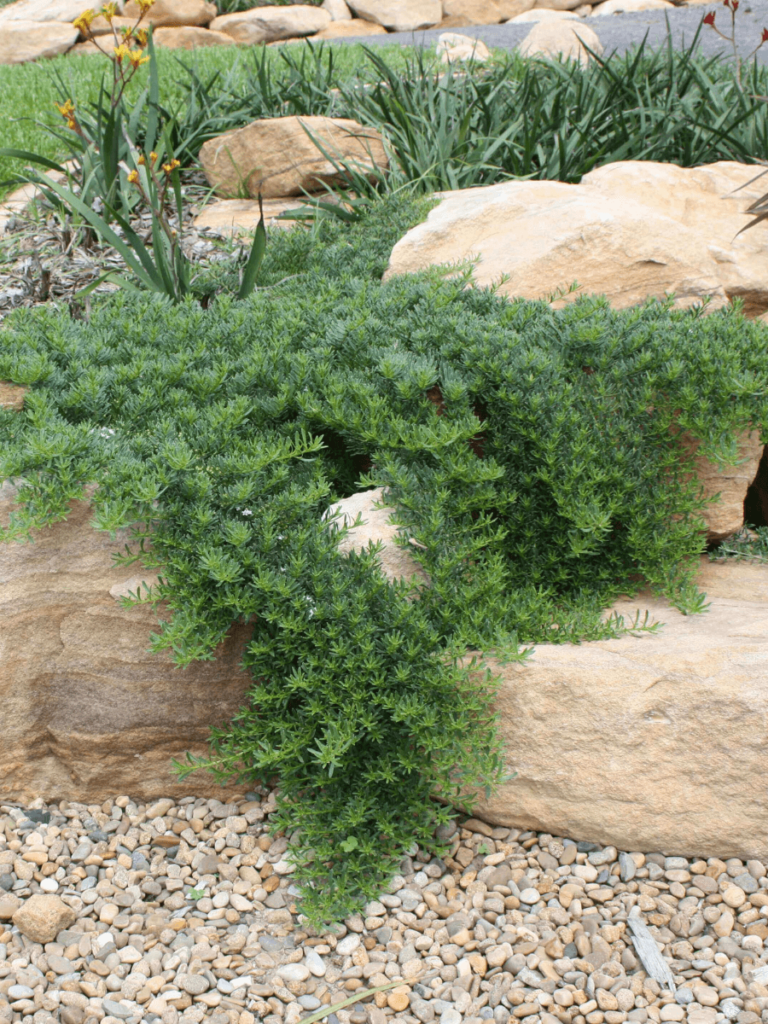
Myoporum parvifolium 'PARV01' PBR Yareena Andreasens Green
11320 W. Indian School Rd. - Avondale, AZ 85037Specials. 623-242-0370. Get Directions. Get our latest tips, advice & specials. sent straight to your inbox. Myoporum is an Australian and Southeast Asia native, and we like to use them as a moderate growing ground cover on banks or slopes, where they blanket the area with a dense covering of light.
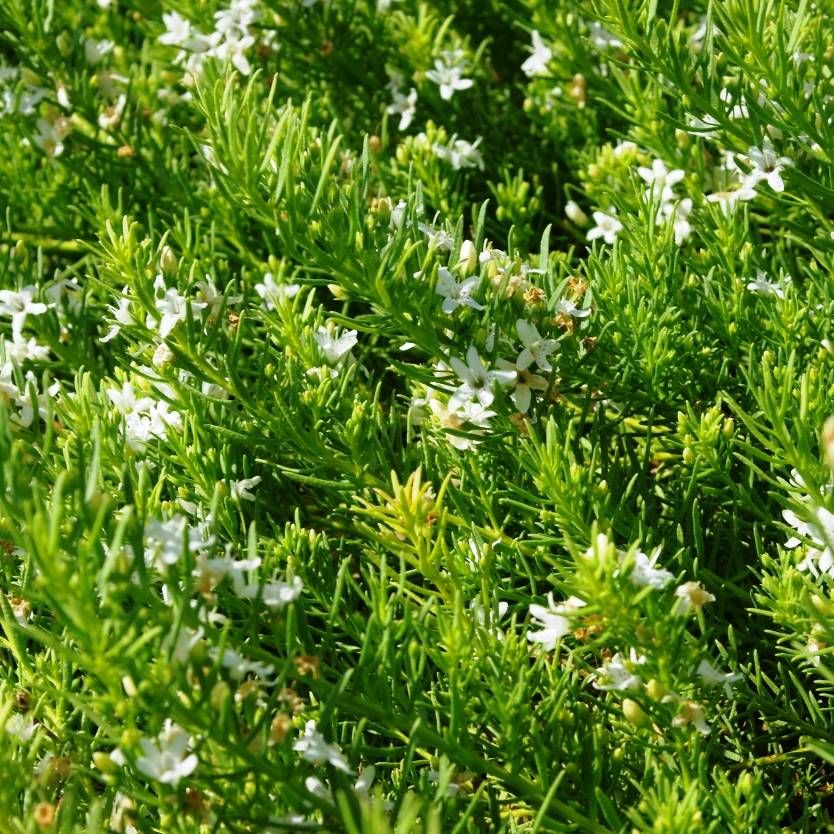
Myoporum Parvifolium PLANTS WHITSUNDAY
Myoporum parvifolium 'Fine Leaf Form' (Fine-leaf Groundcover Myoporum) - A quick growing, trailing dense evergreen groundcover that grows to 4 to 6 inches tall and spreads to 5 feet or more with well-branched stems and closely spaced narrow leaves. In late spring and summer white star shaped flowers form in clusters at the tips of the branches.
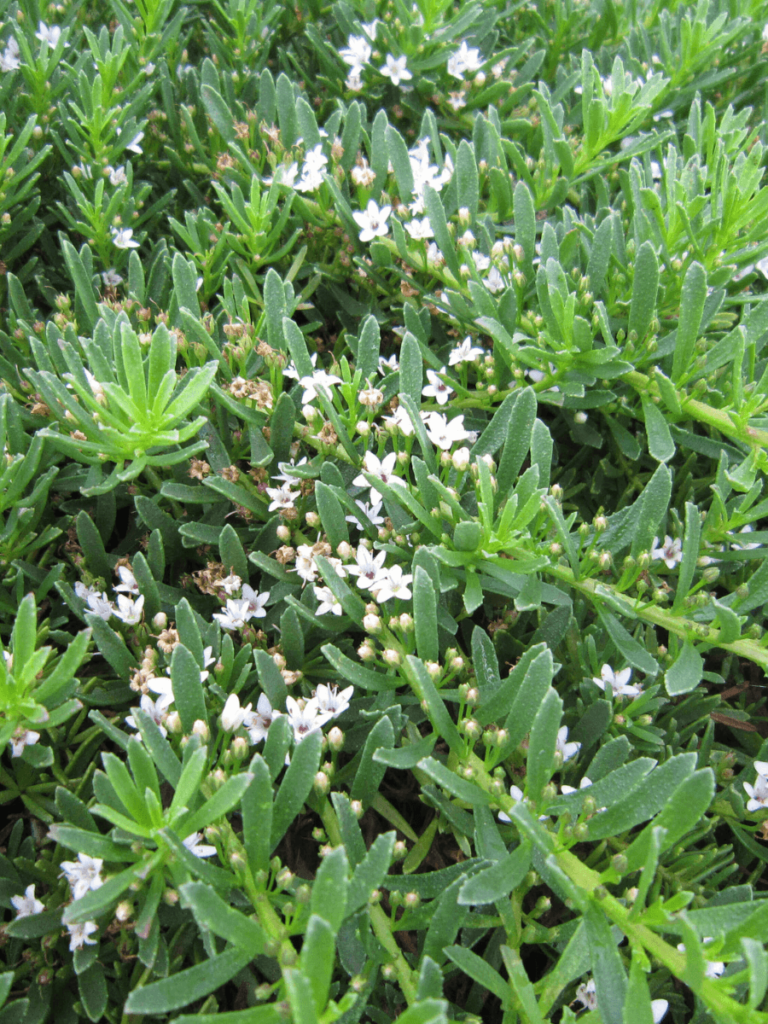
Myoporum parvifolium 'PARV01' PBR Yareena Andreasens Green
Plant myoporum parvifolium 6 to 8 feet apart in well-drained clay, loamy or sandy soil. Myoporum tolerates acidic, neutral or alkaline soils. Choose a spot that gets full sun, which means the plant spends at least half the day bathed in direct sunlight. Myoporum plants quickly fill in the gaps between one another to form a broad, dense mat of.

Myoporum parvifolium / Creeping Boobialla Ground cover, Ground cover
Myoporum parvifolium, commonly called prostrate or creeping myoporum, is an evergreen, perennial ground cover native to Australia that grows in U.S. Department of Agriculture plant hardiness zones 9 through 11. A prostrate shrub with narrow, semi-succulent leaves, it spreads up to 10 feet from the plant base.
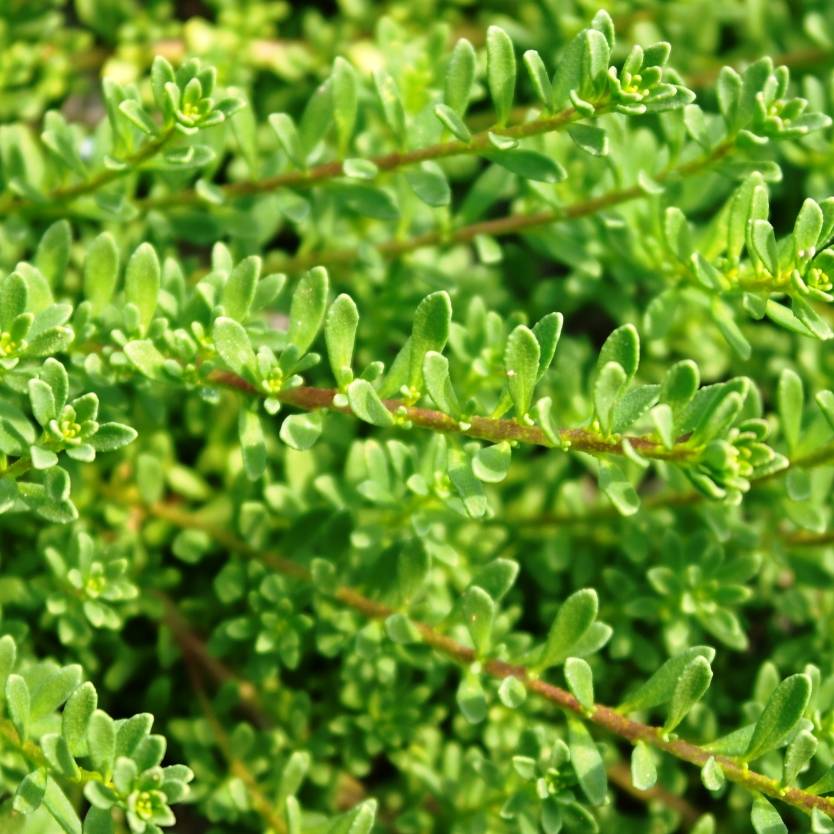
Myoporum parvifolium Pink Form Divine Plants Online Shop
Myoporum parvifolium. Creeping Boobialla (broad leaf form) Notes. Uses: Extremely hardy weed-suppressing ground cover for embankments, verges, streetscapes and high traffic areas. Acts as a living mulch and weed suppressor. Bird and butterfly attracting. Requires well-drained soils.

Myoporum parvifolium Muchea Tree Farm
Featured Image: Myoporum parvifolium / Photo by cultivar413 / Flickr (cropped) / CC BY 2.0. Myoporum parvifolium is a prostrate ground cover that only grows to a height of around 30 cm but will spread over the ground to easily cover more than 1 square metre.. Myoporum parvifolium varieties . There are a number of different varieties that have been discovered and bred over the years.

Myoporum parvifolium White Garden Variety
About Myoporum parvifolium 'White' (Creeping Myoporum) This fast-growing evergreen bush is called Myoporum parvifolium 'White'. Growing an average landscape size of 3-6″ high by 9′ wide, this low-growing bush can also be planted as a groundcover. Its branches are filled with small narrow leaves that are accompanied by star-shaped.
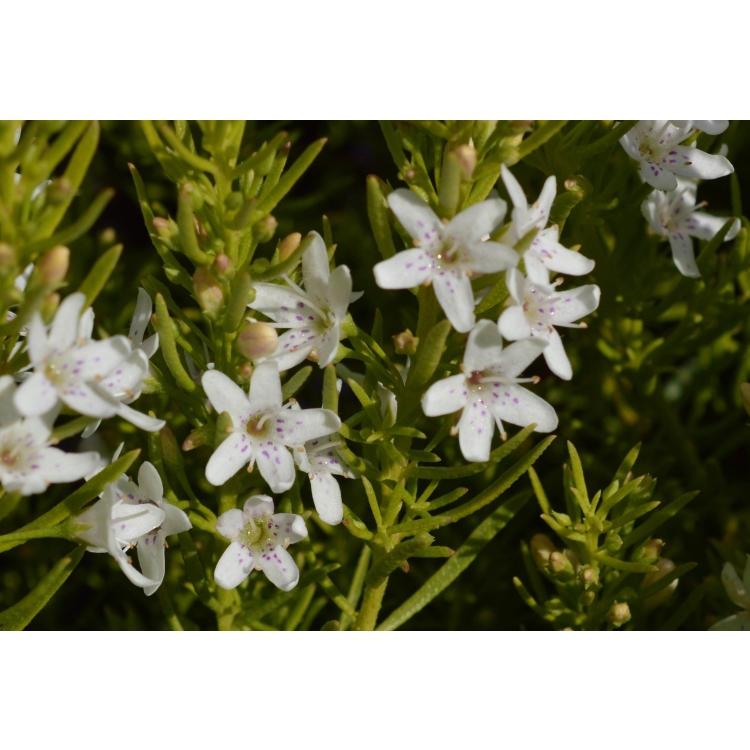
Myoporum parvifolium alba
Common name: Creeping boobialla, dwarf native myrtle, creeping myoporum. Prostrate mat-forming shrub usually less than 0.1 m tall; branches tuberculate or non-tuberculate, glabrous; leaves alternate, clustered, linear-oblanceolate to oblanceolate, 5-40 x 2-8 mm, obtuse or acute, tapering to a petiole-like base; margins entire or more rarely.